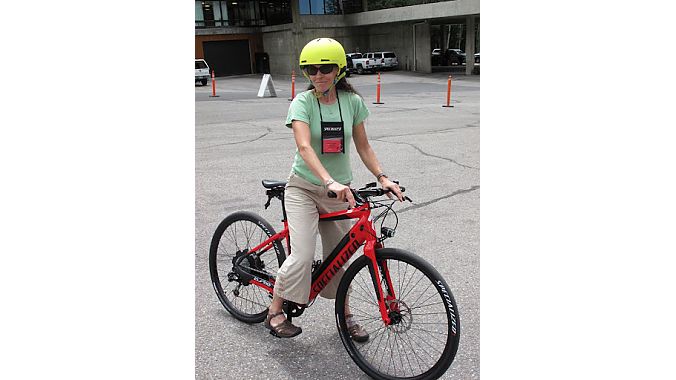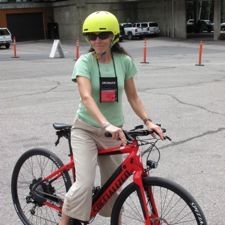SNOWBIRD, UT (BRAIN) Thursday July 19 2012 6:51 AM MT—Wheel out Specialized’s sizzling red electric Turbo and it quickly attracts a crowd of dealers tossing out questions, voicing opinions and, in general, wanting take it for a spin.
While Specialized has plenty of new products to show off at its annual dealer event—ranging from sweeping changes in its Roubaix line to one of the most comprehensive array of women’s bikes and accessories in the industry—the electric Turbo is clearly a showstopper.
Just ask David Nazaroff from Toga Bikes in New York City. “This is awesome,” he said, a huge smile flashing across his face after taking it for a longer than expected jaunt through Snowbird’s backstreets.
“I could sell these in New York all day long,” Nazaroff later told Mike Sinyard, Specialized’s president and founder, in an informal meet and greet outside the company’s exhibition headquarters—a massive tent near Snowbird’s famous aerial tram.
Several years ago Sinyard had been generally dismissive of electric bikes, but pressure from European dealers and a look at the potential market led him to give a reluctant thumbs up to a team of developers in Switzerland.
But there were rules—it had to be fast, it had to mechanically bombproof and it had to look like a bike—sleek and fast. No electric clunkers in the catalog.
Today, Sinyard’s a convert. “I ride this bike back and forth to work and when I get home, especially in the summer, I’m not drenched in sweat,” he said. Chatting with dealers while wearing a red cape (the bike makes him feel like Superman), Sinyard said people who see him zipping up hills wonder how he goes so fast. “And I really like riding it at night,” he added, noting the powerful front light on the bike.
There’s a problem, however. The bike’s top speed—at almost 30 mph—is too fast to legally sell as a bike in the U.S. market. And Sinyard’s reluctant to de-tune it to meet a 20 mph legal requirement. It just wouldn’t be as much fun to ride, he said.
As Chad Price, who helped lead the development team, explained to another informal group of dealers, a simple controller adjustment would bring the speed down for the U.S. market. “But Mike doesn’t want to do it,” Price said. Dealers who were critical of that point of view should “talk to Mike,” he said. And some did just that.
Price fielded questions and suggestions from dealers like Nazaroff who said he thought it would sell well in New York to others like Howard Larlee of Orange Cycle who said it would be a tough sell in Orlando, Florida. “You can get an electric scooter for $4,000,” Larlee said.
Another dealer, John Lawler, who currently sells Pedego and I-Zip brands, told Price that if Specialized would make it legal, lower the spec for the motor and some parts, and bring the price down, he would have few problems selling it.
But Sinyard’s just not interested in selling lower price-point electric bikes. If dealers can sell Shivs, Venges, Tarmacs and Roubaix’ for $5,000 and up, why sell a sophisticated electric bike for less?
So don’t expect to see this electric machine anytime soon in the U.S. market. It currently sells for about $7,300 or 5,550 euros in Europe. And as Price said the company’s focus is currently on the European market where electrics comprise a growing slice of the retail pie.
Most European electric bikes appeal to older riders who no longer want to pedal as hard while commuting to work or the store. But frequent mechanical issues that require frequent shop visits are frustrating for consumers and retailers, Price said. “We want to avoid that,” he added.
So when developing the Turbo, Sinyard wanted the team to focus on reliability as much as speed and looks. “This is our bike. It’s not a bunch of parts we just put on a frame,” Price said.
Earlier in the season, Specialized brought 50 key European dealers to Valencia, Spain, to unveil the Turbo and take them for test rides. “When we told them the price point, they were silent and I was really worried,” Price recalled.
“But we put them on the bikes, took them for a ride through some of Valencia’s side streets, and then took them out on a four-lane boulevard where we kept right up with traffic. When we got back, they were all smiles. They said they could sell it, that it was the kind of bike they would ride and their friends would ride.”
Price declined to discuss exactly how many units Specialized will deliver in Europe, but it’s well over a thousand units and the company is currently sold out.










